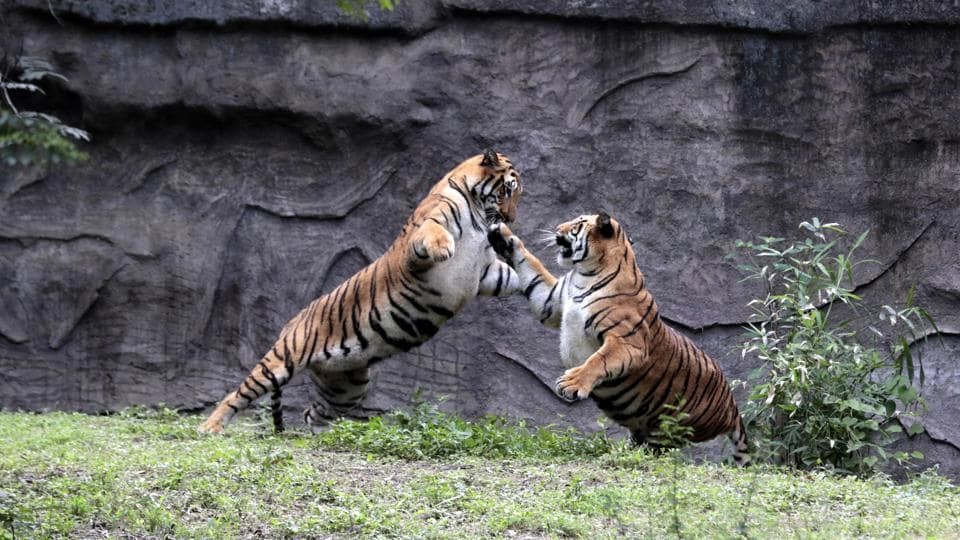Description

Disclaimer: Copyright infringement not intended.
Context
- The announcement by National Tiger Conservation Authority (NTCA) chief that theDibang Wildlife Sanctuary in Arunachal Pradesh would soon be notified as a tiger reserve has caused disquiet among the area’s Idu Mishmi people, who feel that a tiger reserve would “hinder their access” to the forest.
Who are the Idu Mishmis?
- The Idu Mishmi is a sub-tribe of the larger Mishmi group (the other two Mishmi groups are Digaru and Miju) in Arunachal Pradesh and neighbouring Tibet.
- They are of mongoloid stock and speak the Tibeto-Burman language.
.jpeg)
Location
- Known for their weaving and craftsmanship skills, the Idu Mishmis primarily live in Mishmi Hills, bordering Tibet.
- Their ancestral homelands are spread over the districts of Dibang Valley and Lower Dibang Valley as well as parts of Upper Siang and Lohit.
Population
- The tribe is estimated to comprise around 12,000 people (as per census 2011), and their language (also called Idu Mishmi) is considered endangered by UNESCO.
Society, Religion and Culture
- All pervading goddess Nani-Intaya is the sole creator of the universe for the Idus.
- Nani-Intaya and Masello Zino are worshipped as creators of mankind and universe as a whole.
- The major festivals of the Idus are ‘Reh’ and ‘Ke-meh-ha’.
- Reh festival is held during the month of February. It is an occasion for people to relax, enjoy, dance, eat and drink.
- The Idu-Mishmi society is patriarchal and patrilineal.
Migration
- Apparently the Idu-Mishmis migrated towards the south to present habitat from Tibet through Dibang and Lohit Valleys.
Connection with the forest
- Traditionally animists, the tribe has strong ties with the region’s rich flora and fauna.
- Animals such as the hoolock gibbons and tigers have deep cultural relations with the Idu Mishmi.
- Tigers are especially important to the Idu Mishmis — according to Idu mythology, they were born to the same mother, and thus, tigers are their “elder brothers”.
- Idu Mishmis also follow a strict belief system of myths and taboos — ‘iyu-ena’ — that restrict them from hunting many animals, including a complete prohibition on killing tigers.
- This belief system has led to a unique model of wildlife conservation.

Present controversy
- While the Dibang Wildlife Sanctuary — a biodiversity hotspot home to rare Mishmi takin, musk deer, goral as well as clouded leopards, snow leopards and tigers — was notified in 1998, plans to declare it as a tiger reserve have been afoot for a while now.
- In April 2022, at the 20th NTCA meeting, members accorded final approval to declare the wildlife sanctuary as a tiger reserve.
- As Dibang Valley became a site by wildlife biologists to map the tiger habitat and count tigers, the recommendations from these visits have led to a proposal suggesting a reconstitution of the existing Dibang Wildlife Sanctuary as the Dibang Tiger Reserve.
- The tribe has been vociferously opposing any move to convert the wildlife sanctuary into a tiger reserve, fearing that the move will “cut off access to their lands”.
- An upgrade to a tiger reserve would feature stricter security measures like a ‘Special Tiger Protection Force’, which would be guarding the area at all times.
- Members of the community claim that Dibang Wildlife Sanctuary was created without people’s consent or knowledge.
Community Conserved Area
- More recently, the community has declared part of its forest land as a ‘Community Conserved Area’, or a CCA.
- It is a model governed entirely by local populations, where villagers are demarcate a part of their ancestral land as a “biocultural conserved area”, where they ban hunting, felling trees, and implement other conservation measures

About Dibang WLS
- The Dibang wildlife sanctuary lies nestled in the Arunachal Pradesh.
- It is one of the eight wildlife sanctuaries, located in north east of Anini, in Arunachal Pradesh which occupies part of the Eastern Himalayas.
- Dibang valley district has been named after the Dibang River, a tributary of Brahmaputra River.
- Adjacent to the Mouling National Park, it was established in 1980s.
- Later in 1988, as per the guidelines of UNESCO, together these areas became part of Dibang Biosphere Reserve, one of the major bio-diversity hotspots of the world.
Flora
- It consists of vegetation of moist temperate and alpine type.
- The two main categories of vegetation are temperate broad leaved forest and temperate conifer forest (Rhododendra, Bamboo, Gregaria, Tsuga etc).
Fauna
- Snow leopards thrive in proximity to high altitudes whereas clouded leopards are found in lower latitudinal zones.
- Other carnivores include marbled cat, jungle cat, tiger, panther etc. Among herbivores-musk deer, Mishmi takin, red panda, serow, blue sheep, red goral.
- Other species of fauna are Gongshan muntjac, Asiatic black bear, Mishmi hills flying giant squirrel, otter, sloth bear and macaque.
- This Eastern Himalayan Ecosystem is home to a variety of frog species, almost 45 species of moths, butterflies and many other insects.
- Amongst snakes, Cobra (King and Nala variety), Krait, Indian Rock Python and viper are commonly found.
About Dibang River
- Dibang River, also known as Sikang by the Adi and Talo in Idu, is an upstream tributary river of the Brahmaputra in the Indian state of Arunachal Pradesh.
- It originates and flows through the Mishmi Hills in the (Upper) Dibang Valley and Lower Dibang Valley districts.
- The Sisar, Mathun, Tangon, Dri, Ithun and Emra are the major tributaries of the Dibang.
|
PRACTICE QUESTION
Q) Which of the following statements with reference to Idu Mishmis is/are correct?
a. The Idu-Mishmi society is matriarchal.
b. According to Idu mythology, they and tigers were born to the same mother, and thus, tigers are their “elder brothers”.
c. Their language is considered endangered by UNESCO.
- a and b
- b and c
- a and c
- None of the above
Answer: Option 2
|

https://indianexpress.com/article/explained/explained-politics/indigenous-idu-mishmis-protesting-tiger-reserve-8540568/












